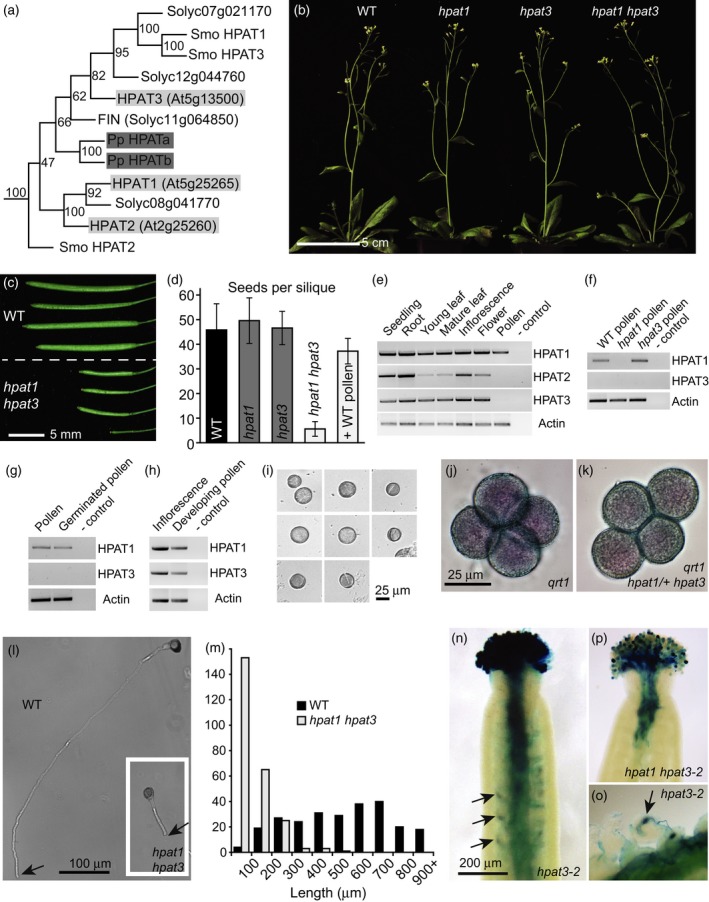Figure 1.

HPAT1 and HPAT3 function redundantly in pollen tube growth.(a) Maximum parsimony phylogenetic tree of the hydroxyproline O‐arabinosyltransferase (HPAT) proteins from Arabidopsis, tomato (Solyc), Physcomitrella patens (Pp) and Selaginella moellendorffii (Smo) with bootstrap support values in nodes. Arabidopsis and Physcomitrella proteins are marked in light and dark grey respectively. (b) Wild type (WT, Columbia‐0), hpat1, hpat3 and hpat1 hpat3 mutant plants all appear morphologically normal. (c) Fully expanded siliques from WT (top) and hpat1 hpat3 double mutants (bottom). (d) Number of seeds per silique (mean ± SD, n = 25) for WT (black bar), single mutants (dark grey bars) and hpat1 hpat3 double mutants (light grey bars), with and without pollination using WT pollen. (e)–(h) HPAT expression. Though generally broadly expressed, HPAT3 transcripts are not detected in mature WT pollen (e), in hpat1 pollen (f), or in WT in vitro germinated pollen (g). However, transcripts are detected in a mixture of developing pollen stages (h), like those shown in (i). (j), (k) qrt1 pollen tetrads stained with simplified Alexander's viability stain. Like qrt1 alone (j), all members of a tetrad from qrt1 hpat1/+ hpat3 plants appear morphologically normal (k). (l) Pollen tubes from WT and hpat1 hpat3 genotypes (inset) grown for 8 h in vitro. Arrows mark the tip of the pollen tube. (m) Distribution of pollen tube lengths after 8 h of in vitro pollen tube growth (n = 250 tubes per genotype). (n)–(p) hpat3‐2 mutants carry a pollen‐specific GUS reporter within the T‐DNA construct allowing mutant pollen to stain blue. Seven hours after pollination of emasculated WT stigmas with hpat3‐2 (n, o) blue pollen tubes can be seen in the ovary and targeting ovules (arrows) and dissection of the style reveals GUS deposition in the ovule upon fertilization (o). After pollination with hpat1 hpat3‐2/+ pollen, the double mutant pollen tubes penetrate poorly and fail to target ovules (p).
